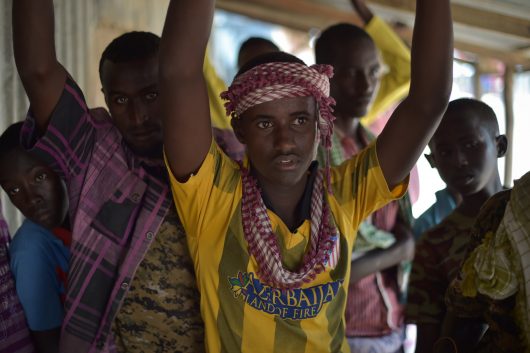Ten Facts About Somali Refugees

According to the United Nations High Commissioner for Refugees (UNHCR), Somalia “remains the epicenter of one of the world’s largest displacement crises.” Of the approximately 11 million people living in Somalia, well over one million are internally displaced while another one million Somalis are registered as refugees in the Horn of Africa and Yemen. Somali refugees have suffered the consequences of a “failed state,” enduring decades of political turmoil, severe drought and the presence of extremist groups.
Because Somalia is one of the countries specified in President Trump’s executive order regarding the immigration ban, it’s important to understand the implications of the country’s situation. Here are 10 facts about Somali refugees:
- Since 1991, when President Mohammed Siad Barre fled the country to make way for a power struggle between two warring clans, Somalia has lacked a stable government. Fighting among warlords and rebel groups has made it extremely difficult to restore peace in the country.
- It has been difficult to provide Somalia with the international aid that it needs. The country became so dangerous that the U.N. pulled its international aid workers from Somalia in 2001. In 2005, the U.N. World Food Program shipments to Somalia were stopped because they were being seized by rebel forces. Today, it is still difficult to ensure that aid shipments do not fall into the wrong hands.
- The total number of native-born Somalis living outside their country more than doubled between 1990 and 2015. The number increased from approximately 850,000 to two million.
- Today, there are close to 150,000 Somali immigrants and refugees living in the U.S., and under the Obama administration, nearly 43,000 Somali refugees came to the U.S.
- This decade, more than 260,000 people have died in Somalia as the result of severe drought, which has contributed to a lack of clean water and the disintegration of agriculture across the country. The U.N. Office for the Coordination of Humanitarian Affairs stated in a 2016 report that one in 12 Somalis struggles to meet their needs regarding food and water. The report also stated that approximately 305,000 children under the age of five were suffering from malnutrition.
- Somalia’s neighboring countries host the largest number of its refugees. According to data collected by the UNHCR, there are just under 330,000 Somali refugees registered in Kenya, 241,000 in Ethiopia and 255,000 in Yemen. Thousands more have found temporary living situations in Tanzania, Uganda, Djibouti and Eritrea.
- Dadaab, the largest refugee camp in the world, was home to more than half a million Somalis in 2015. The camp is located in northeastern Kenya and was initially set up as a temporary living situation for refugees fleeing conflict in Somalia and Sudan. Unfortunately for many, the camp has become more permanent. Refugees are often stuck in camps for several decades, unable to emigrate to another country or return to their own. Kenya now plans to close the camp as it has become a breeding ground for extremist groups.
- Islamist group Al-Shabaab has a strong presence in Somalia, initially gaining support by promising safety and security to citizens. Al-Shabaab’s credibility quickly declined due to violence and the denial of Western aid. Al-Shabaab’s presence in Somalia has contributed heavily to the refugee crisis, committing senseless acts of violence that contribute further to the chaos.
- According to the U.S. federal budget proposal for 2017, Somalia will receive $116.8 million in funding for security assistance and even less in humanitarian aid.
- Somali refugees around the world have been resettled and have succeeded in creating productive and successful lives in Western countries. Apart from the many Somalis living in the U.S., around 280,000 Somali immigrants live in European countries.
Somalia continues to be one of the most prominent sources of the world’s refugees, as it has been for several decades. The call for humanitarian assistance and the need for development in the country is at an all-time high, especially considering the possibility that, under the new administration, Somali refugees may not be allowed to enter the United States.
– Peyton Jacobsen
Photo: Flickr
